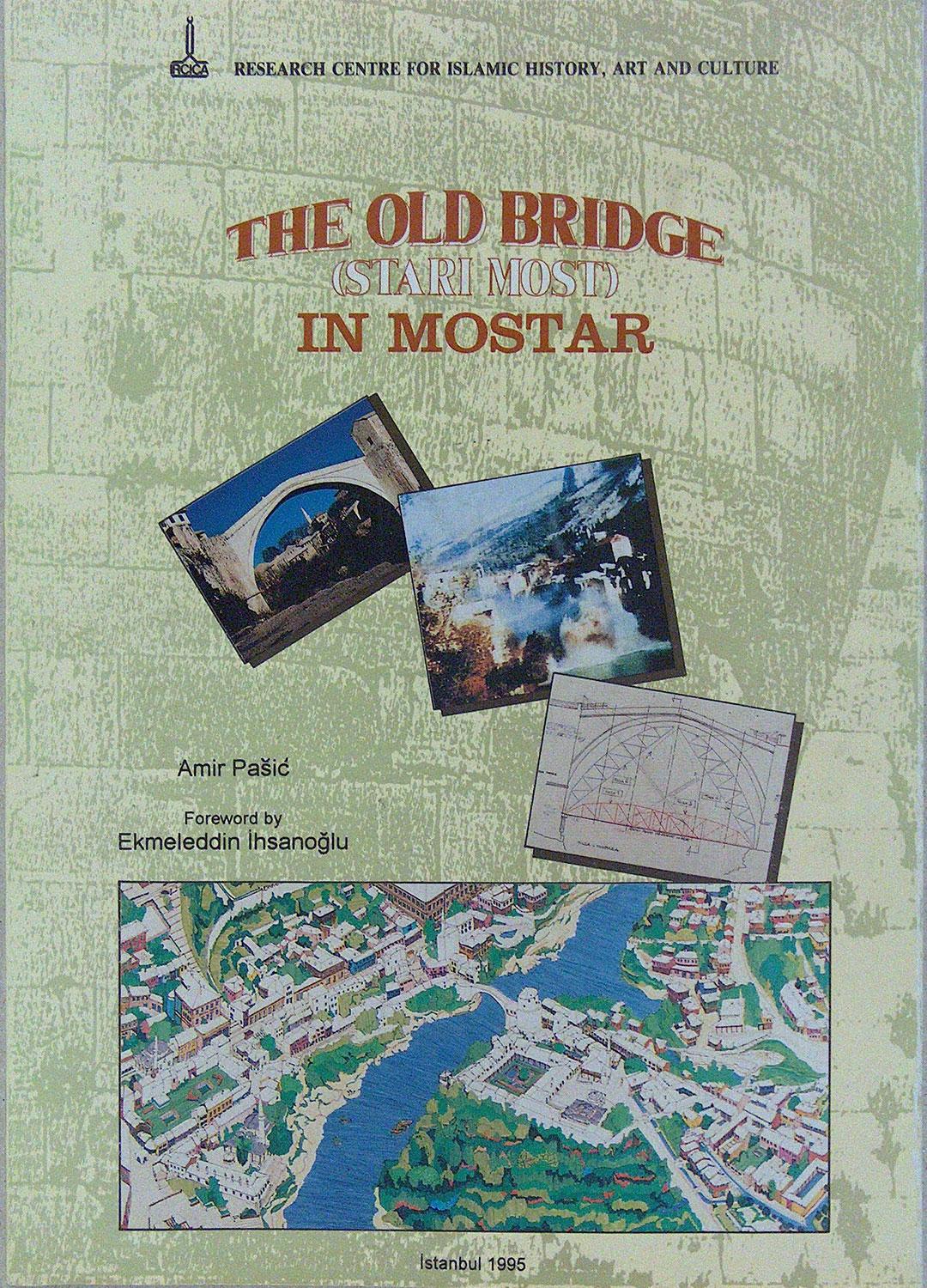
Built in 1556 by the Ottoman
architect Hayreddin, the Old Bridge in Mostar was admired by everybody for
its beauty and technical perfection. After having survived many wars for
centuries, the bridge was shelled thousands of times bySerbian artillery
starting from April1992 and by Croats starting from May 1993 until it was
finally brought down on 9 November 1993. This work by Dr. AmirPasic is a
historical and technical study of the Old Bridge. It is largely
illustrated with colour photographs and technical drawings.Reviews" In
this small volume the tragedy of former Yugoslavia is recounted in the
fate of the Stari Most. The author believes that if we want to rebuild a
multicultural Bosnia-Herzegovina we have to reconstruct first
the buildings, mosques, churches and of course bridges; all structures that
will survive our short human lives and will be there as physical signs
to future generations that apluralist societyis possible." Islam
and Christian – Muslim Relations, Vol.8, no. 1 (March 1997)" The
central aim of the study is to keep alive the image and memory of the
Bridge, also underline its symbolic importance – not just for the people
of Mostar and Bosnia-Herzegovina but for the world at large – with the
hope that the political conditions and material resources will soon
permit its residents to reconstruct the Bridge to its original glory."
Ayyub Malik, Muslim World Book Review, Vol. 19, no. 1 (1998)
Mostar'daki Eski Köprü (Stari Most), (İngilizce), 1556 yılında Osmanlı mimarı Hayreddin tarafından inşa edilen Mostar’daki Eski Köprü, güzelliği ve teknik mükemmelliğiyle herkesin beğenisini kazanmıştır. Yüzyıllar boyunca pek çok savaşa göğüs geren köprü, Nisan 1992’den itibaren Sırp topçuları, Mayıs 1993’ten itibaren ise Hırvatlar tarafından binlerce kez bombalanmış ve nihayet 9 Kasım 1993’te yıkılmıştır. Dr. Amir Pasic’in bu çalışması Eski Köprünün tarihsel ve teknik bir incelemesidir ve tarihî belge niteliğindedir. Büyük ölçüde renkli fotoğraflar ve çizimlerle zenginleştirlmiştir. Köprünün toplumun zihninde ve hafızasındaki imajını öne çıkarmakta ve sadece Mostar ve Bosna-Hersek halkı için değil, tüm dünya için barışın, kültürel mirasın ve birlikte yaşamanın sembolü olarak taşıdığı önemi vurgulamaktadır.,
Basım Yeri: İstanbul, Basım Tarihi: 1995









